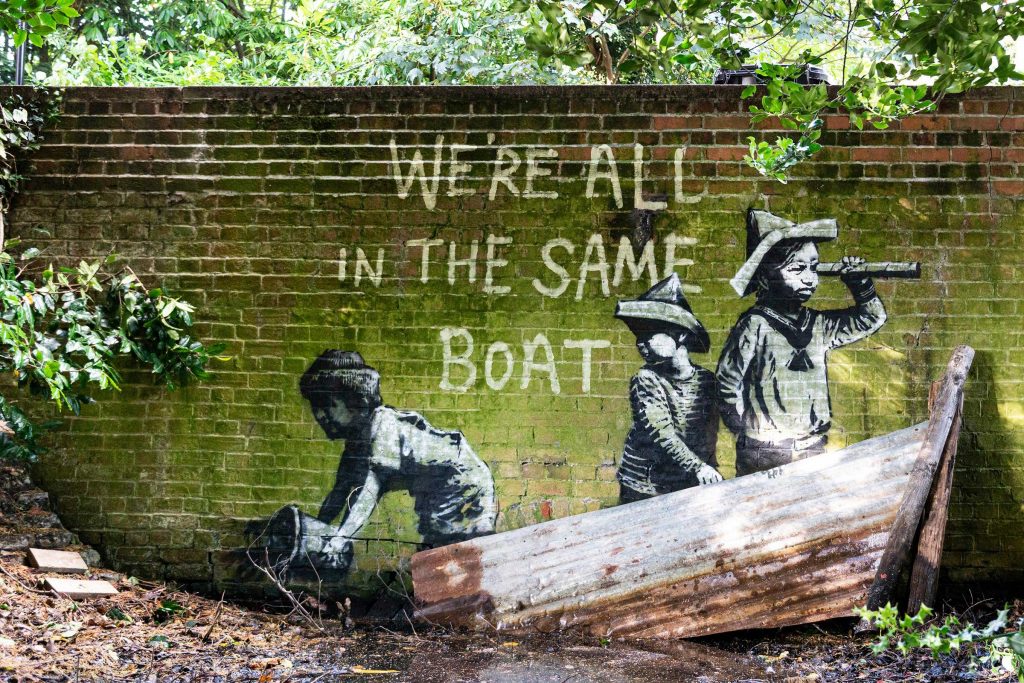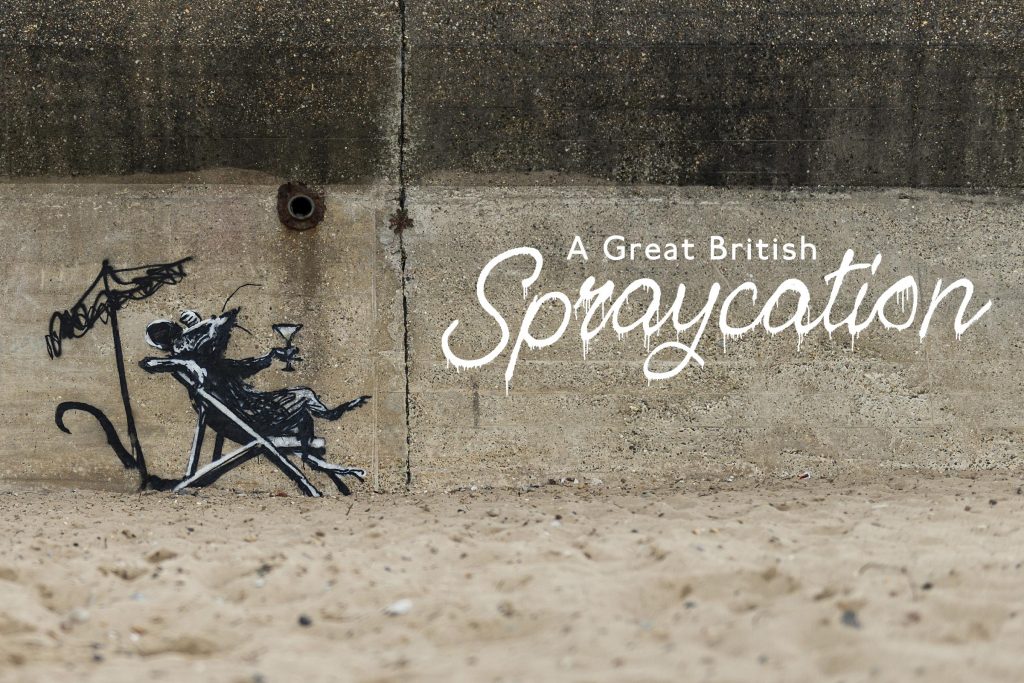A week ago, several street artworks popped up on the east coast of England. Banksy–a British street artist who is famous for his powerful social commentary arts, has claimed he was behind these artworks. He released a short video entitled A Great British Spraycation on his Instagram account. This video shows the anonymous artist driving in aging camper and painting murals at some places.
Banksy’s Spraycation satirizes the “staycations” concept that is echoed as alternative holidays during the rising of Covid-19 cases, in which people spend their holidays at home or in local destinations. A rat leaning back in a deckchair drinking a cocktail under a beach umbrella becomes an icon of this Spraycation series. Banksy often uses rats as a character in his arts, which symbolizes the regenerative nature of street art–it continues to reappear despite massive efforts to remove graffiti. The rats also represent many ordinary people living in a disadvantaged environment.
Here are some works of Banksy’s A Great British Spraycation:
1. We’re All in The Same Boat

Banksy, A Great British Spraycation (2021). Courtesy of the artist. https://news.artnet.com/art-world/banksy-confirms-string-of-british-murals-1998682
This work depicts three children on the leaking boat. Two of them are on the top of the boat, while another one is busy taking out water from the boat with a bucket. Above them, the artist added the text “We’re All in The Same Boat”. The almost same phrase also can be found in Slavoj Žižek’s book, Pan(dem)ic, “We may have all come on different ships, but we’re in the same boat now.”
Related to the pandemic, this phrase means people might come from different “ships” (ideology, state, or nation), but now we are in the same “boat”. People around the world faced the same crisis, which is health, economic, social, and environmental crises.
Banksy’s mural poses a further question “are we really in the same boat now?” Some people can keep going with their usual activities, but others struggling to make a living. White collar workers and the super-rich people can work from the comfort of their homes, while the medical workers, street food sellers, and factory workers have risky jobs and lives during the pandemic.
This mural can be viewed at Nicholas Everitt Park, Oulton Broad, Suffolk.
2. A Giant Seagull
Banksy, A Great British Spraycation (2021). Courtesy of the artist.https://www.bbc.com/news/uk-england-norfolk-58145220
A giant seagull appears on the sidewall of a building. The seagull trying to eat materials in a big yellow bin. This mural represents wild animals changing their behavior and eating trashes discarded by humans. These days, we are familiar with news telling about ocean animals eating garbage. Their stomachs are full of plastics, gloves, rope, plastic cups, and other trash. Banksy’s seagull draws people’s attention to the environmental issues around the coastal habitat. This mural was painted in Katwijk Way, Lowestoft, Suffolk.
3. People Dancing on The Bus Shelter
Banksy, A Great British Spraycation (2021). Courtesy of the artist. https://www.bbc.com/news/uk-england-norfolk-58145220
This mural portrays a couple of elder people dancing on the top of a bus shelter, while another one playing an accordion. Banksy gives the town little touch of happiness and light relief amid the pandemic. This artwork is accessible at Admiralty Road, Great Yarmouth, Norfolk.
Besides these artworks, Bansky also painted an arcade-style grabber crane in the seafront at Gorleston, Norfolk; a child with a crowbar at London Road North, Lowestoft; and a hermit crab who sells shells holding a sign: “Luxury rental only”, on a sea wall in Cromer, Norfolk. In the Spraycation series, Banksy also deals with graffiti on a miniature stable and installation art on the statue of Frederick Savage. All of these works are wonderful, enliven the coastal towns, and at the same time thought-provoking.
Banksy – A Great British Spraycation

